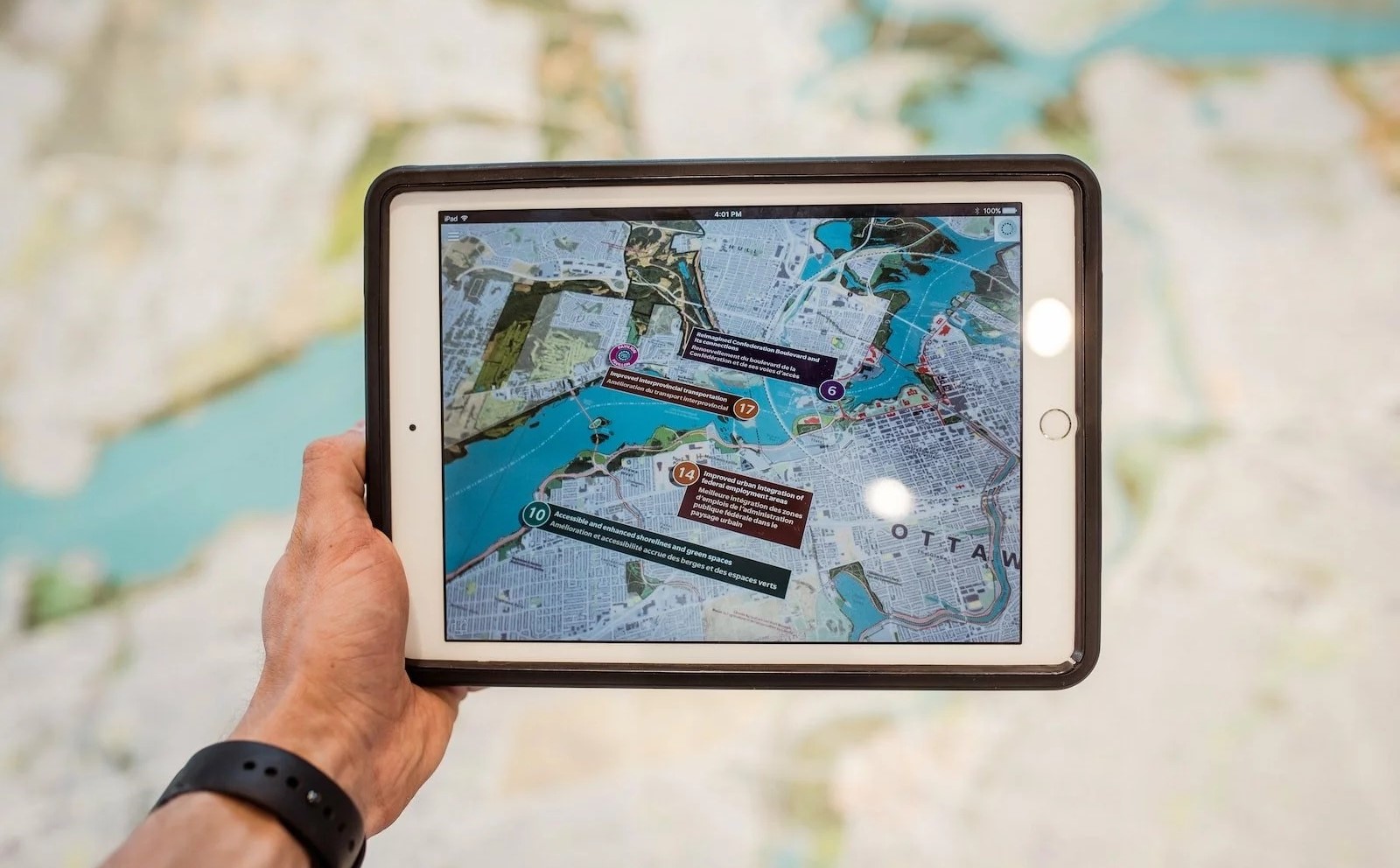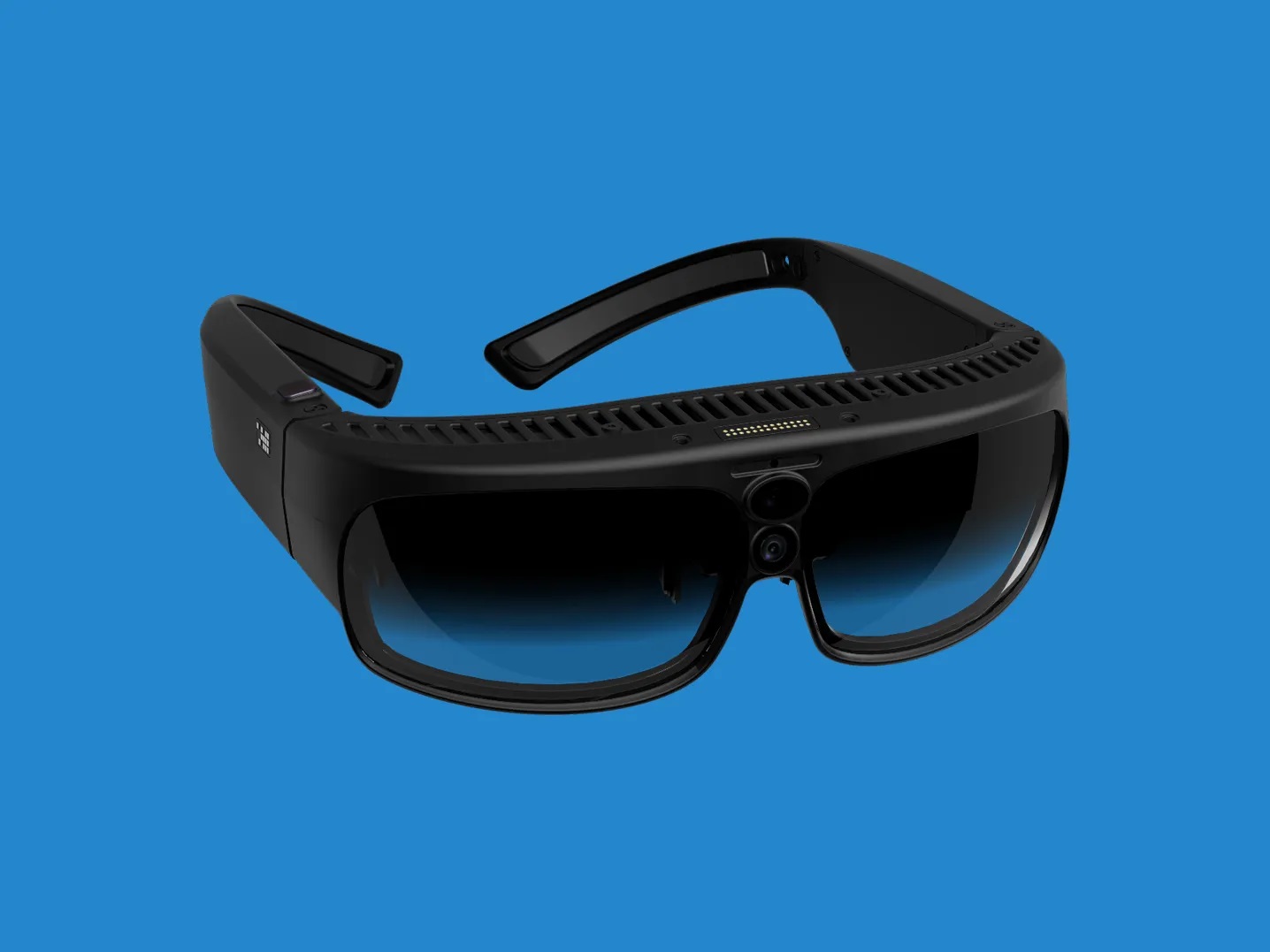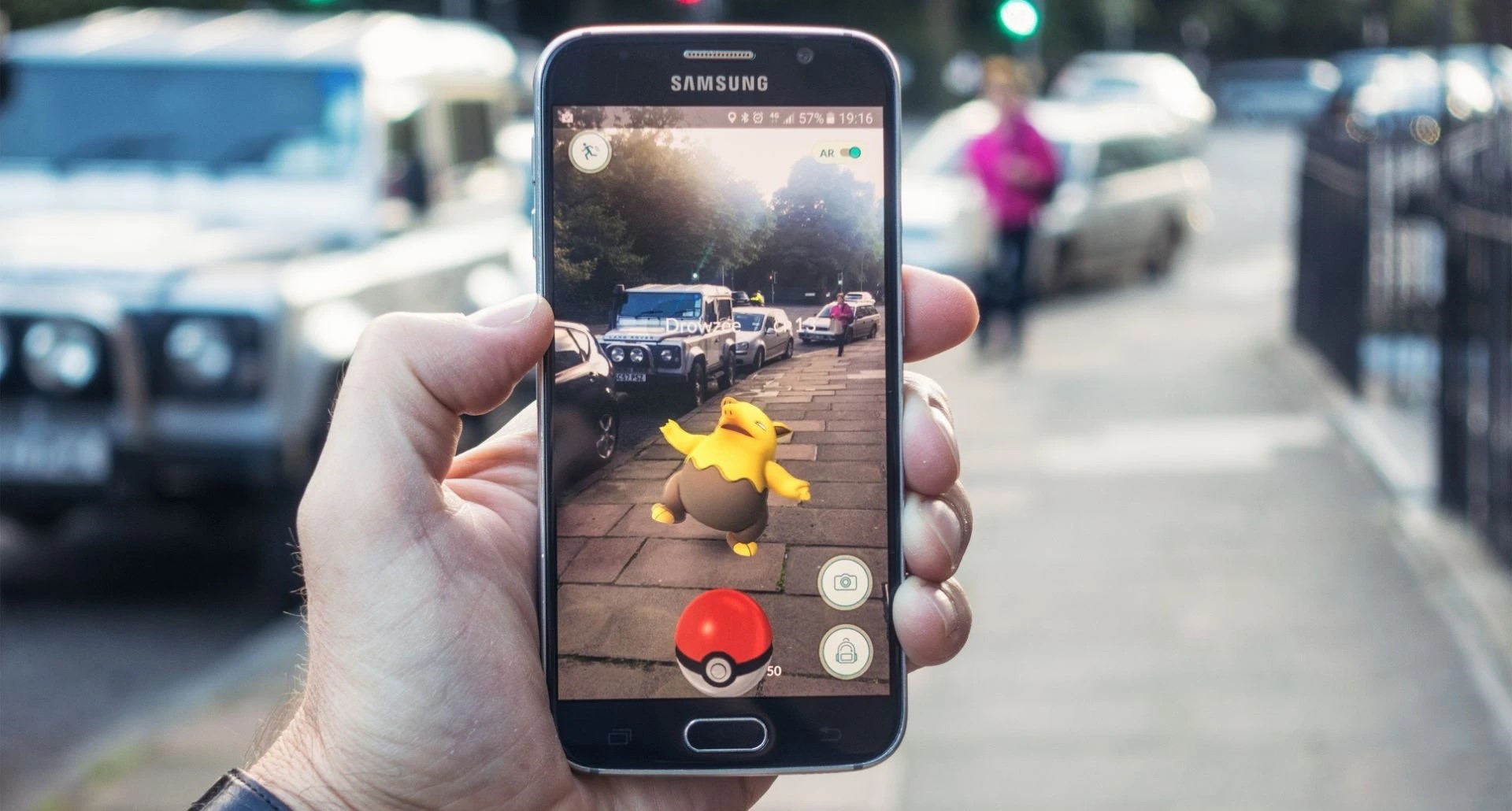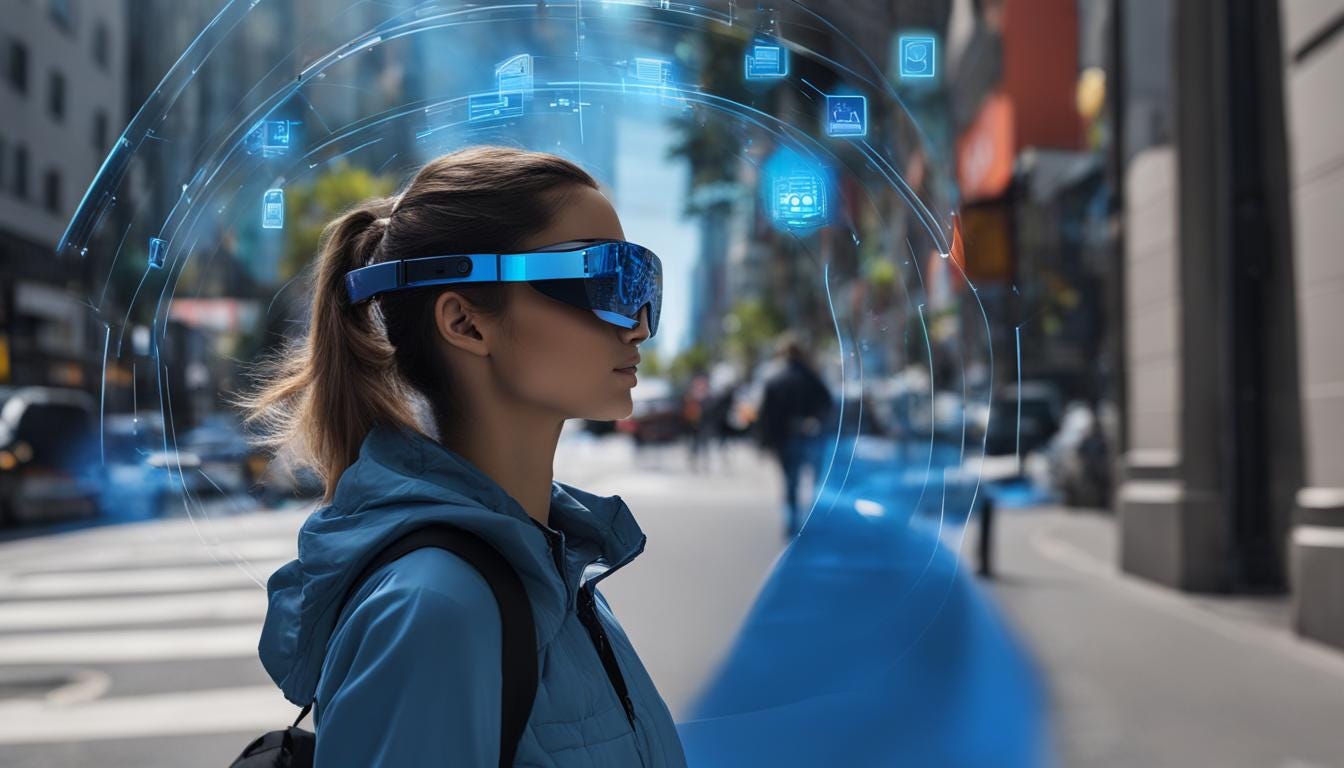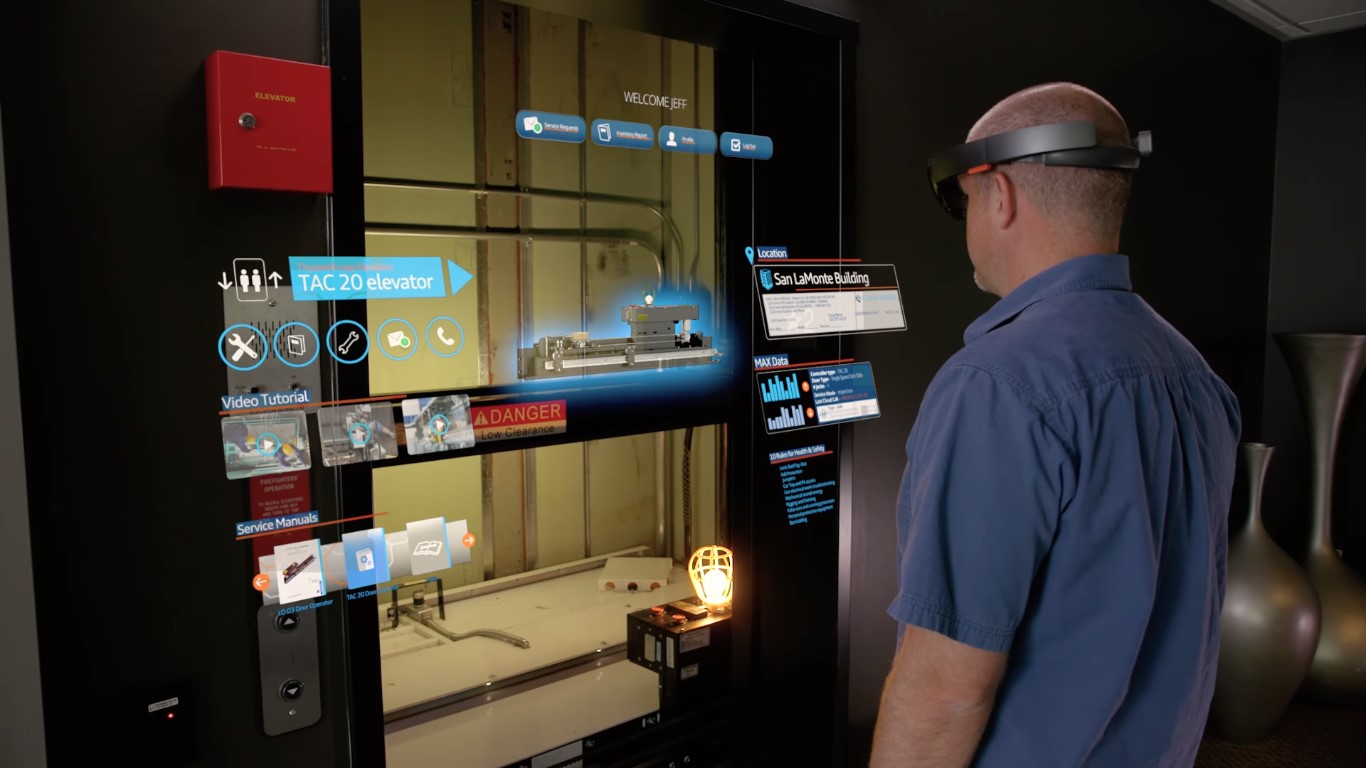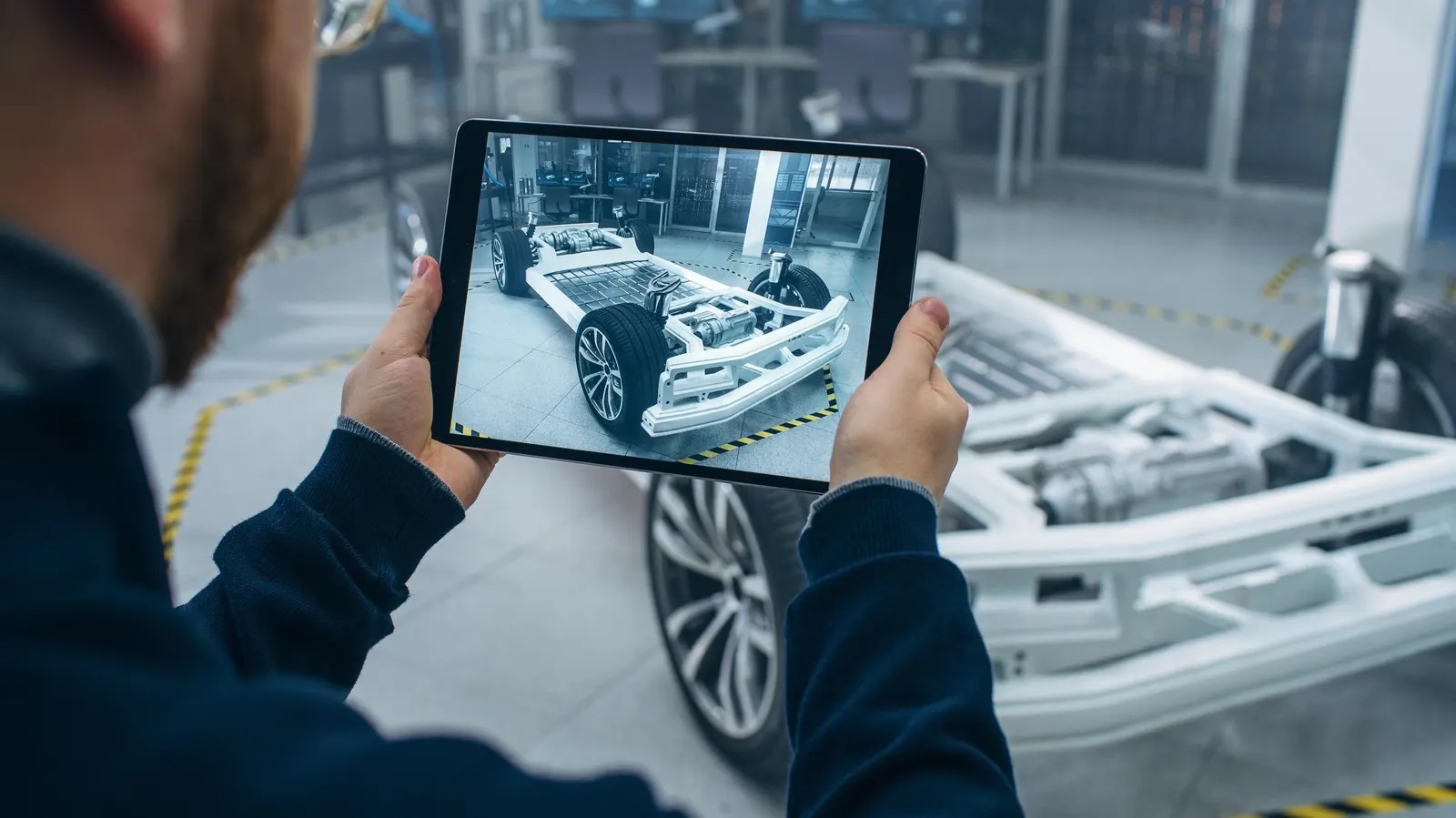Home>Latest News>Technology Trends>The Rise Of AR Apps


Technology Trends
The Rise Of AR Apps
Modified: May 29, 2024
Stay ahead of the curve with the latest technology trends. Explore the rise of AR apps and their impact on the digital landscape. Keep up with the evolving tech world.
(Many of the links in this article redirect to a specific reviewed product. Your purchase of these products through affiliate links helps to generate commission for Techsplurge.com, at no extra cost. Learn more)
Table of Contents
Introduction
In recent years, the world has witnessed a remarkable surge in the adoption and integration of augmented reality (AR) technology across various sectors. This cutting-edge innovation has not only transformed the way we perceive and interact with digital content but has also revolutionized numerous industries, from entertainment and education to healthcare and retail. The rise of AR apps has played a pivotal role in driving this technological revolution, offering immersive and interactive experiences that bridge the gap between the physical and digital realms.
As AR technology continues to advance at a rapid pace, the potential applications and benefits of AR apps have expanded exponentially. From enhancing consumer engagement to facilitating more efficient business operations, AR apps have emerged as a game-changing force in the tech landscape. By overlaying digital information onto the real world, these apps have unlocked a myriad of opportunities for businesses and individuals alike, paving the way for a new era of innovation and creativity.
The widespread adoption of AR apps has not only captivated the imagination of tech enthusiasts but has also captivated the attention of businesses seeking to leverage this technology to gain a competitive edge. With the ability to deliver personalized and immersive experiences, AR apps have redefined the way companies engage with their target audiences, driving customer retention and brand loyalty to unprecedented heights.
As we delve deeper into the evolution, impact, and future of AR apps, it becomes increasingly evident that this transformative technology is poised to reshape the way we interact with the digital world. The potential for AR apps to revolutionize diverse industries and empower users with unparalleled experiences is nothing short of extraordinary. In the following sections, we will explore the evolution of augmented reality technology, the profound impact of AR apps on various industries, the future trajectory of this groundbreaking innovation, as well as the challenges and limitations that accompany its widespread adoption. Join us on this captivating journey through the realm of AR apps, where the boundaries between reality and imagination continue to blur, opening up a world of endless possibilities.
Read more: What Are AR Apps
The Evolution of Augmented Reality Technology
Augmented Reality (AR) technology has undergone a remarkable evolution since its inception, transcending the realm of science fiction to become an integral part of our digital landscape. The roots of AR can be traced back to the 1960s when computer scientist Ivan Sutherland developed the first head-mounted display system, known as the "Sword of Damocles." This pioneering invention laid the foundation for AR by enabling users to view computer-generated graphics overlaid onto their physical surroundings.
Over the following decades, advancements in computer vision, graphics processing, and mobile technology propelled AR into the mainstream. In 2009, the launch of smartphones equipped with gyroscopes and accelerometers paved the way for the widespread adoption of AR applications. This pivotal development empowered developers to create immersive AR experiences that leveraged the capabilities of mobile devices to overlay digital content onto the real world.
The watershed moment for AR came in 2016 with the release of Pokémon GO, a mobile game that captivated millions of users worldwide. By blending AR technology with location-based gameplay, Pokémon GO showcased the immense potential of AR to merge virtual elements with the physical environment, captivating a global audience and sparking widespread interest in AR applications.
Simultaneously, tech giants such as Apple and Google began integrating AR capabilities into their mobile operating systems, further fueling the proliferation of AR apps. The introduction of ARKit by Apple and ARCore by Google provided developers with powerful tools to create immersive AR experiences, leading to an explosion of AR content across various app stores.
The evolution of AR technology has also been driven by advancements in hardware, with the emergence of AR glasses and smart eyewear offering new possibilities for hands-free AR interactions. Companies like Microsoft with HoloLens and Magic Leap with their augmented reality headsets have pushed the boundaries of AR hardware, bringing futuristic AR experiences closer to reality.
Furthermore, the convergence of AR with other emerging technologies, such as artificial intelligence and spatial computing, has unlocked new frontiers for AR applications. This synergy has enabled the development of more sophisticated AR experiences, ranging from interactive educational tools and immersive retail experiences to advanced industrial applications that enhance productivity and safety.
As AR technology continues to evolve, the boundaries between the physical and digital worlds are becoming increasingly blurred, opening up a realm of possibilities that were once confined to the realm of science fiction. The evolution of AR technology has not only transformed the way we perceive and interact with digital content but has also laid the groundwork for a future where immersive AR experiences are seamlessly woven into our daily lives.
The Impact of AR Apps on Various Industries
The integration of augmented reality (AR) apps has unleashed a wave of transformative effects across a wide spectrum of industries, revolutionizing the way businesses engage with consumers and enhancing operational efficiency. The profound impact of AR apps extends far beyond mere novelty, permeating industries such as retail, healthcare, education, manufacturing, and entertainment, among others.
Retail
In the retail sector, AR apps have redefined the shopping experience by enabling customers to visualize products in their real-world environment before making a purchase. Through AR-powered virtual try-on features, consumers can preview clothing, accessories, and cosmetics, fostering a more immersive and personalized shopping experience. This not only enhances customer engagement but also reduces the likelihood of returns, thereby boosting customer satisfaction and loyalty.
Healthcare
AR apps have revolutionized medical training and patient care by providing interactive simulations and visualizations. Surgeons can utilize AR to overlay medical imaging data onto a patient's anatomy during complex procedures, enhancing precision and reducing the risk of errors. Additionally, AR apps have been instrumental in patient education, allowing individuals to gain a deeper understanding of their medical conditions through interactive 3D models and visual aids.
Read more: Developing An Augmented Reality App
Education
In the realm of education, AR apps have transformed traditional learning methods by offering immersive and interactive experiences. Students can explore virtual simulations, dissect virtual organisms, and engage with historical events through AR-enhanced educational content. This not only fosters a deeper understanding of complex concepts but also ignites a passion for learning by making education more engaging and accessible.
Manufacturing
AR apps have streamlined manufacturing processes by providing real-time visual guidance and overlaying digital instructions onto physical workspaces. This has led to improved productivity, reduced errors, and enhanced training for workers. By leveraging AR apps, manufacturers can optimize assembly processes, perform quality inspections, and facilitate maintenance tasks with greater efficiency and accuracy.
Entertainment
The entertainment industry has embraced AR apps to deliver captivating and immersive experiences to audiences. From interactive AR-enhanced live performances and theme park attractions to AR-powered gaming experiences, this technology has elevated entertainment to new heights. AR apps have blurred the boundaries between the virtual and physical worlds, captivating audiences and offering new avenues for creative expression.
The impact of AR apps on these industries is just the beginning, as the potential applications of AR technology continue to expand. With ongoing advancements in AR hardware, software, and content creation, the transformative influence of AR apps is poised to reshape the way we interact with digital content and the physical world, ushering in a new era of innovation and possibility.
The Future of AR Apps
The future of augmented reality (AR) apps holds immense promise, poised to usher in a new era of innovation and transformation across diverse industries. As technology continues to advance at a rapid pace, the trajectory of AR apps is set to redefine the way we interact with digital content and the physical world. Looking ahead, several key trends and developments are poised to shape the future landscape of AR apps.
Enhanced Immersive Experiences
Future AR apps are expected to deliver even more immersive and realistic experiences, blurring the boundaries between the virtual and physical worlds. Advancements in AR hardware, such as AR glasses and smart eyewear, will enable users to seamlessly integrate digital content into their surroundings, creating truly immersive and interactive experiences.
Integration with 5G Technology
The rollout of 5G technology is set to revolutionize AR apps by enabling faster data transmission and lower latency, paving the way for more seamless and responsive AR experiences. This integration will unlock new possibilities for real-time collaboration, multiplayer AR gaming, and high-definition AR content delivery, transforming the way users engage with AR apps.
Expansion of Enterprise Applications
AR apps are poised to play a pivotal role in transforming enterprise operations, with applications spanning remote assistance, training simulations, and augmented data visualization. Industries such as manufacturing, logistics, and field services will leverage AR apps to enhance productivity, streamline workflows, and provide real-time contextual information to workers, driving operational efficiency and cost savings.
Integration with AI and Machine Learning
The convergence of AR with artificial intelligence (AI) and machine learning will enable AR apps to deliver more personalized and context-aware experiences. By leveraging AI algorithms, AR apps will be capable of understanding user behavior, preferences, and environmental context, thereby tailoring AR content and interactions to individual users in real time.
Read more: The Rise Of Augmented Reality
Advancements in AR Content Creation
The future of AR apps will witness advancements in content creation tools and platforms, empowering developers and creators to craft more sophisticated and compelling AR experiences. From AR-enabled design and prototyping tools to user-friendly AR content creation platforms, the democratization of AR content creation will fuel a wave of innovative and diverse AR applications.
Seamless Integration with IoT
AR apps will seamlessly integrate with the Internet of Things (IoT), enabling users to interact with and control connected devices and smart environments through AR interfaces. This convergence will unlock new possibilities for AR-enhanced smart homes, industrial IoT applications, and interactive retail experiences, bridging the gap between physical and digital ecosystems.
As these trends unfold, the future of AR apps is poised to transcend existing boundaries, unlocking a realm of possibilities that will reshape the way we perceive and interact with the world around us. With ongoing advancements in AR technology, hardware, and content creation, the future of AR apps holds the promise of delivering unparalleled experiences that seamlessly blend the digital and physical realms, empowering users with new avenues for creativity, productivity, and engagement.
Challenges and Limitations of AR Apps
While the potential of augmented reality (AR) apps is vast and transformative, they are not without their challenges and limitations. Understanding and addressing these hurdles is crucial for the continued advancement and widespread adoption of AR technology.
Hardware Limitations
One of the primary challenges facing AR apps is the dependence on hardware capabilities. While modern smartphones and AR glasses have significantly enhanced AR experiences, limitations in processing power, battery life, and sensor accuracy can hinder the seamless integration of AR into daily activities. Additionally, the cost of AR-compatible hardware may pose a barrier to entry for some users and businesses, limiting the accessibility of AR apps.
Read more: Consumers Overcoming The Barriers Of AR
User Experience and Interface Design
Creating intuitive and user-friendly interfaces for AR apps presents a unique set of challenges. Designing interactions that seamlessly blend digital content with the physical environment while ensuring a smooth and natural user experience requires careful consideration. Moreover, the need to minimize cognitive overload and prevent user fatigue during prolonged AR interactions adds complexity to the design process.
Privacy and Security Concerns
As AR apps collect and process real-time environmental data, privacy and security concerns come to the forefront. Safeguarding user privacy, preventing unauthorized access to sensitive information, and mitigating potential security vulnerabilities in AR apps are critical considerations. Striking a balance between delivering personalized AR experiences and protecting user privacy remains a significant challenge for developers and stakeholders.
Content Creation and Quality Control
Developing high-quality AR content that seamlessly integrates with real-world environments demands specialized skills and resources. From 3D modeling and animation to spatial mapping and environmental understanding, the complexity of content creation for AR apps presents a barrier for many developers. Ensuring consistent quality and performance across a diverse range of devices and environments further compounds the challenge.
Ethical and Social Implications
The immersive nature of AR apps raises ethical and social considerations, particularly concerning their impact on real-world interactions and perceptions. Issues such as augmented misinformation, digital trespassing, and the potential for AR addiction necessitate thoughtful examination and responsible implementation of AR technology to mitigate negative societal effects.
Integration with Existing Infrastructure
Integrating AR apps into existing infrastructure and workflows across industries poses a significant challenge. From compatibility with legacy systems to the need for seamless integration with enterprise software and data management platforms, the successful deployment of AR apps requires careful planning and coordination to maximize their utility and impact.
Addressing these challenges and limitations is essential for the continued evolution and widespread adoption of AR apps. By fostering innovation, collaboration, and responsible development practices, the AR community can overcome these hurdles and unlock the full potential of AR technology across diverse domains.
The challenges and limitations of AR apps underscore the need for ongoing research, innovation, and collaboration to address these hurdles and propel the technology toward a future where AR seamlessly integrates into our daily lives, empowering users with transformative experiences.
Conclusion
In conclusion, the rise of augmented reality (AR) apps has heralded a new era of technological innovation, reshaping the way we interact with digital content and the physical world. From its humble beginnings as a futuristic concept to its widespread integration across diverse industries, AR technology has transcended barriers and captivated the imagination of users and businesses alike.
The evolution of AR technology, marked by significant advancements in hardware, software, and content creation, has paved the way for immersive and interactive AR experiences. The impact of AR apps on industries such as retail, healthcare, education, manufacturing, and entertainment has been profound, revolutionizing consumer engagement, operational efficiency, and creative expression.
Looking to the future, the trajectory of AR apps holds immense promise, with trends such as enhanced immersive experiences, integration with 5G technology, and expansion of enterprise applications poised to redefine the AR landscape. However, it is essential to acknowledge the challenges and limitations that accompany the widespread adoption of AR apps, including hardware constraints, user experience design, privacy concerns, content creation complexities, ethical implications, and integration challenges.
Despite these obstacles, the potential of AR apps to empower users with transformative experiences remains undeniable. By addressing these challenges through innovation, collaboration, and responsible development practices, the AR community can propel the technology toward a future where AR seamlessly integrates into our daily lives, unlocking a realm of possibilities and reshaping the way we perceive and interact with the world around us.
As we navigate this captivating journey through the realm of AR apps, it becomes increasingly evident that the boundaries between reality and imagination continue to blur, opening up a world of endless possibilities. The future of AR apps holds the promise of delivering unparalleled experiences that seamlessly blend the digital and physical realms, empowering users with new avenues for creativity, productivity, and engagement. With ongoing advancements in AR technology, hardware, and content creation, the future of AR apps is poised to transcend existing boundaries, unlocking a realm of possibilities that will reshape the way we perceive and interact with the world around us.

